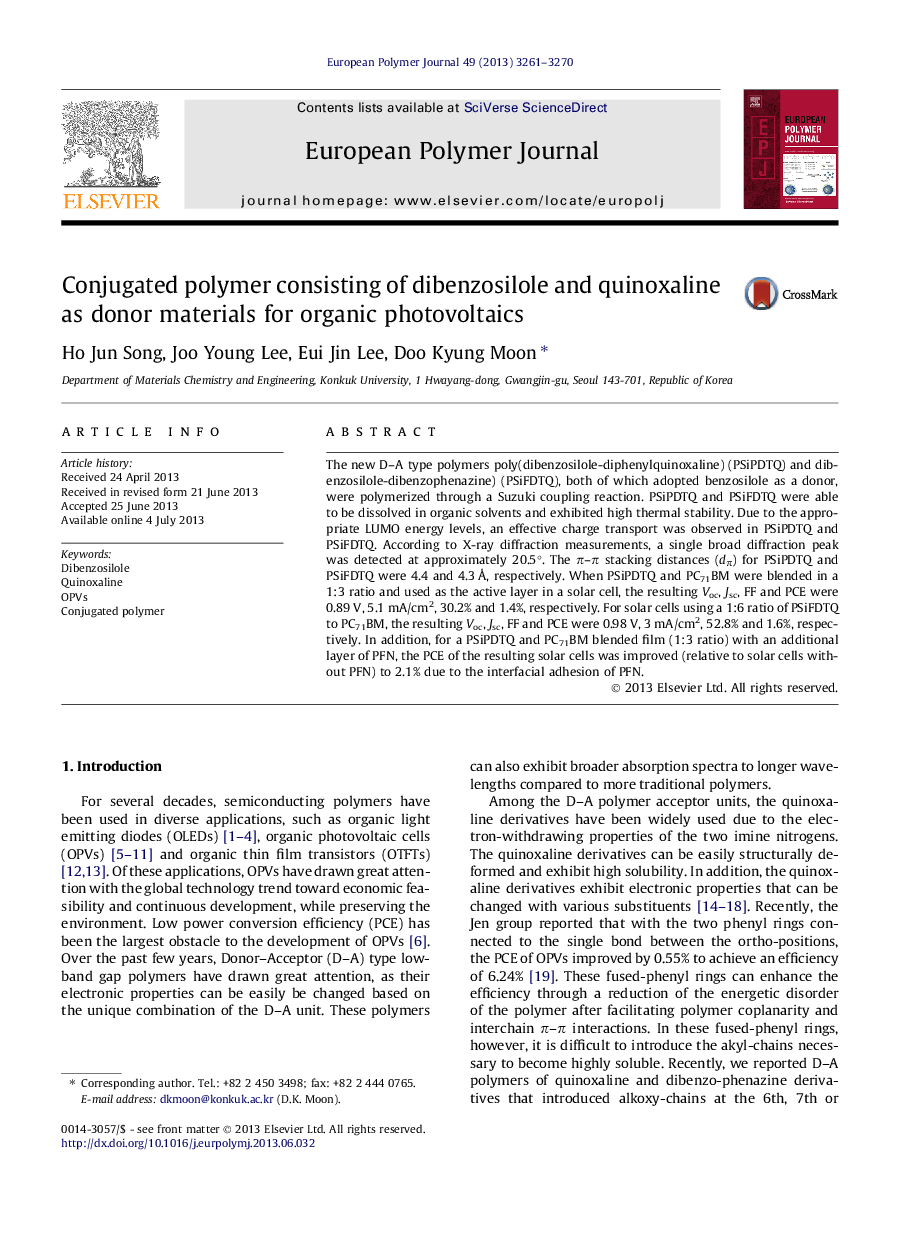| Article ID | Journal | Published Year | Pages | File Type |
|---|---|---|---|---|
| 10609804 | European Polymer Journal | 2013 | 10 Pages |
Abstract
The new D-A type polymers poly(dibenzosilole-diphenylquinoxaline) (PSiPDTQ) and dibenzosilole-dibenzophenazine) (PSiFDTQ), both of which adopted benzosilole as a donor, were polymerized through a Suzuki coupling reaction. PSiPDTQ and PSiFDTQ were able to be dissolved in organic solvents and exhibited high thermal stability. Due to the appropriate LUMO energy levels, an effective charge transport was observed in PSiPDTQ and PSiFDTQ. According to X-ray diffraction measurements, a single broad diffraction peak was detected at approximately 20.5°. The Ï-Ï stacking distances (dÏ) for PSiPDTQ and PSiFDTQ were 4.4 and 4.3 Ã
, respectively. When PSiPDTQ and PC71BM were blended in a 1:3 ratio and used as the active layer in a solar cell, the resulting Voc, Jsc, FF and PCE were 0.89Â V, 5.1Â mA/cm2, 30.2% and 1.4%, respectively. For solar cells using a 1:6 ratio of PSiFDTQ to PC71BM, the resulting Voc, Jsc, FF and PCE were 0.98Â V, 3Â mA/cm2, 52.8% and 1.6%, respectively. In addition, for a PSiPDTQ and PC71BM blended film (1:3 ratio) with an additional layer of PFN, the PCE of the resulting solar cells was improved (relative to solar cells without PFN) to 2.1% due to the interfacial adhesion of PFN.
Related Topics
Physical Sciences and Engineering
Chemistry
Organic Chemistry
Authors
Ho Jun Song, Joo Young Lee, Eui Jin Lee, Doo Kyung Moon,
